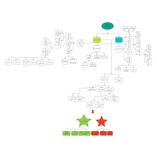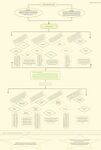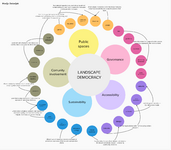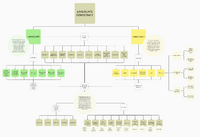Democratic Landscape Transformation 2024 - Team 5
>>> Back to working group overview
>>> Back to seminar reading list
>>> go to the Editing Help
Background of your team
Please present your team briefly. Which linguistic and cultural perspectives does each member bring in? Which disciplinary backgrounds are present in your team?
- My name is Marija Debeljak. I am a 23-year-old student of landscape architecture at HSWT in the IMLA program. I completed my bachelor's degree at the University of Ljubljana, Slovenia, where I come from. My linguistic skills include Slovenian (native), Serbo-Croatian, fluent English, and intermediate German. Alongside my education in landscape architecture, I have work experience in water and flood management, focusing on flood prediction and prevention measures.
- My name is Anamuddin Paikar Iam from Afghanistan.. Iam doing Master degree in International Master of landscape Architecture in HSWT currently . I graduated from Kabul Polytechnic university in 2015. since gradation, I worked as an Architect and Urban Designer at the Ministry of Urban Development and Land in Afghanistan. I can speak Persian, English , and Beginner German.
- etc....
Your Landscape Democracy Manifestoes
Here you can add links to the manifestoes you have presented on April 24. Please make sure that the links are accessible. You can also add them directly here on the wiki, they need to be png or jpg format then.
- Marija Debeljak manifesto: https://drive.google.com/file/d/1R9dQLz-h8zDA90nOU6R8Gj9I38503-vi/view
- Anamuddin Paikar Manifesto:https://drive.google.com/file/d/1gXg3f8T68XY0GHtO9VZcChZsyQa9eMRF/view?usp=drive_link
- manifesto 2 : Steve Dongkeng, a worker and thesis student at the Bologna university(UNIBO). According to the project of the end of the course (architect-building engineer) from the beginning of the year with the theme "search for strategies to produce eco-sustainable, Moden and eccomically accessible houses, in the economically disadvantaged areas", with the project site chosen in a vulnerable area of Cameroon (my native and national country). Being this site in the extremous vulnerable area, it is little studied and documented, and therefore I did not find the reference documents to lead the project. It is in the research for the means to have the project place data that I met Lanscape Democracy Education. Besides others on the ecological and environmental side of this course, the democratic and social approach, that compict and teach to adopt in the projects, has helped to find a way to collect the data directly from the population and renovate them to have the project that you can consult to the following Link(question form, : - Questionary form that i did and volonteers students on the place use to have conversation with local people about the project
| https://liveunibo-my.sharepoint.com/:u:/g/personal/steve_dongkeng_studio_unibo_it/EY-w1FRWPBxDuJN71h1RikMB08Dxnxb0yZJkSZE0q9yxlg?e=JM4Rc2 |
- Statistic elaborations of the answers from loval people that volonteers students they fill during the conversation + the pick of the project actualy coming out from thiers suggestions
| steve dongkeng | https://liveunibo-my.sharepoint.com/:w:/r/personal/steve_dongkeng_studio_unibo_it/_layouts/15/Doc.aspx?sourcedoc=%7BD382E033-5F5E-477B-B20C-5E50593D3000%7D&file=risposte%20elaborate%20e%20pronte%20da%20integrare%20nella%20relazione.odt&action=default&mobileredirect=true&wdOrigin=METAOS.FILEBROWSER.FILES-FOLDER |
Readings, concepts and definitions
- Start: April 3, 2024
- Due: July 2, 2024
While working in your group, please start to express your personal understanding of the relation of landscape and democracy in the form of a concept map with linking words or any other diagrammatic representation. Please make your maps very visual and not just verbal. Think critically about why one map differs from another.
The final product is a shared concept map that integrates the various understandings present within your team.
About concept mapping
Before starting the exercise you can read this article by Joseph D. Novak & Alberto J. Cañas about Theory Underlying Concept Maps and How to Construct and Use Them. This paper gives a good explanation of how concept maps are conceived and developed.
You can use any tool you like for producing your concept map. However, since the result needs to be submitted digitally we recommend the following open source software for producing your maps:
- Cmap Tools >>> you can also work with your group on the Cmap cloud doing a shared map
- VUE - The Visual Understanding Environment
- Use a shared whiteboard to develop your integrated concept map, such as MIRO or MURAL :
How to present your concept maps
- Possible format: JPG (for wiki upload) or link to any other resource
- We give you below a draft image gallery where you can add pictures of your map (in JPG or PNG format)
- You can present your integrated understanding as one concept map or your present individual ones and the integrated one.
- add as many additional materials as you need
Individual concept mapshttps://miro.com/welcomeonboard/eXBWdDM0RnpUZFdOVlpoMGZmOEtUU21VY0V5dEcwVXBaYU52WEgzVkVpeTVIYWxjdHBvcmttc2xCNXdOMWFuY3wzNDU4NzY0NTkyNjg0OTE1MzQwfDI=?share_link_id=222812523739
Common concept map
Reflection
In our landscape democracy group, we got together with individuals from different parts of the world. For example, Afghanistan, Slovenia, and Camaroon, we found both similarities and differences in our understanding of democratic landscapes. We all agree on the importance of involving local communities in landscape decisions, ensuring sustainability, and promoting equity and inclusiveness. However, our cultural contexts bring different priorities and challenges to the forefront. In Afghanistan, the focus is on restoring landscapes affected by conflict and integrating traditional practices with modern techniques. In Slovenia, the emphasis lies on preserving natural beauty, managing tourism sustainably, and balancing urban development with rural landscapes. In Africa, priorities include addressing land ownership issues, combating desertification, and promoting agricultural practices that support local economies and environmental health. The seminar lectures and readings clarified theoretical frameworks, presented diverse case studies, and highlighted best practices, which helped us understand how to apply landscape democracy principles in different contexts. We also learned about interdisciplinary approaches that combine knowledge from various fields for more holistic outcomes. From this seminar, we take home enhanced collaboration skills, a broader perspective, practical tools, and methods for engaging communities, as well as a valuable network for future projects. The experience has inspired and motivated us to continue advocating for democratic landscapes, tailoring strategies to local contexts while adhering to core democratic principles.



